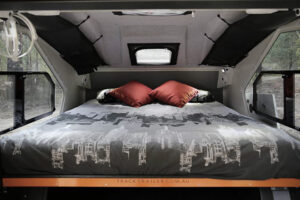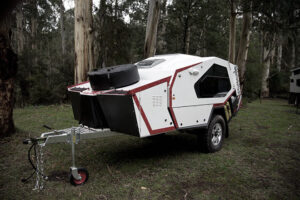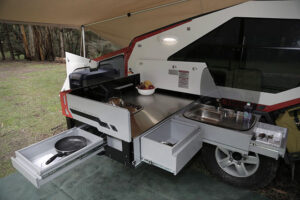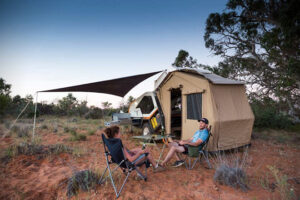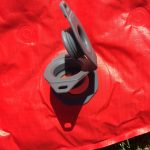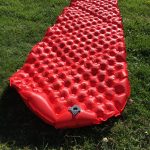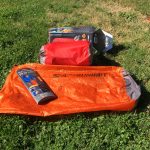Tents are a mainstay of convenience for sleeping outdoors. They come in all shapes, prices and sizes. Here, we bring you a collection of unique tents to add some flair to your next camping or survival excursion. You may even discover your new favorite go-to tent among these!
Tentsile Stingray Tree Tent
Looking up is usually the last thing you would think to do when searching for a tent in the wilderness, but the Tentsile Stingray Tree Tent can be pitched high above hiker’s heads. They are manufactured in quite a few styles, colors and sizes to choose from. A three-person tent like the Stingray 3 weighs about 19 pounds fully packed, so it is viable for a long hike. They even make models that can connect together, creating a makeshift village in the canopy! This style of tent can make a world of difference when having to set camp in damp or marshy areas, or in areas where the ground is very rocky. [$650] Image from rei.com
Coleman Pop-Up Tent
Next up is the Coleman Pop-Up Tent. Unzip the carry bag, and poof . . . setting up camp is over. Coleman makes a great affordable tent, and this style makes camping for people that always struggle with setting up and taking down camp a breeze. It is also light, keeping at under 8 pounds for a 4-person model. Fumbling with tent poles can finally be a thing of the past, and at a price that won’t break your wallet for trying something new. [$100] Image from coleman.com
Tahoe Gear Bighorn XL
Tahoe Gear brings us another great option: Bighorn XL. A teepee style tent fitting as many as 12 people can make those awkward, fumbling attempts at dressing in your tent a thing of the past. It stands 18 feet tall, and is just as wide. It also has a set of adjustable vents along the base to help regulate temperature and humidity, and a rain fly to shed water from the top, but that still allows for the ceiling ventilation the original teepees that indigenous peoples were known for. [$151] Image from tahoegear.com
Mountain Hardware Space Station
If you are looking for something more futuristic than classic, search no further than the Space Station. Mountain Hardware makes an extreme weather ready masterpiece that appears to be suited for another planet. And when near the peaks of the tall mountains this tent was designed for, you might as well be. They come with more than 10 adjustable vents and a sound structural design to help sweep wind up and over in the harshest of weather. It’s a spendy investment, but supercool. [$5,500] Image from mountainhardware.com
Lotus Belle
Lotus Belle makes tents that look out of this world as well, but more in the fairy tale sense. They are made of heavy-duty canvas and are built to last through being set up in the elements for much longer than your average camping trip. They come in lots of variations, but across the board you can expect much more headroom than your average tent. People often utilize them for visually appealing outdoor seating in their yards or at festivals, but they work great out in the woods as well. Shown is the 13-foot Lotus Belle Outback Tent. [$5,500] Image from lotusbelle.com
Nordisk Telemark Tunnel Tent
Last on our list here is Nordisk. They are known for making higher-end tents, and the Telemark Tunnel Tent is a staple of their line. It may look more like a windsock than a tent, but it sheds water and wind like a dream. They come in a range of sizes, but they really excel in the smaller range. They are one of the easiest tents to pack long distances out there, weighing in at around 2 pounds for their 2-person model. It also sports some nice features, such as magnetic closing and a pole for converting the door into a tarp. [Contact for pricing] Image from nordisk.eu
Next time you are looking at upgrading your camping gear or disaster supplies with a new tent, give some of these a glance. While they all excel in different areas, one thing is certain–they’ll all stand out.







